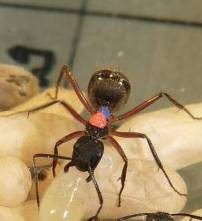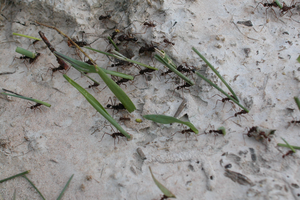Project C1 Roces
Timing decisions in ant colonies: information management, social synchronization, and the determinants of task-related circadian patterns
Summary
Ant societies are highly integrated functional units that show complex colony-level behaviours. These collective responses are flexible, and arise from the actions and interactions among colony members. The timing of different collective behaviours in ant colonies is crucial, because an efficient allocation of individuals to different tasks is required as an adjustment in response to both colony needs and the changing environment. The aim of the present project is, first, to understand how endogenous, environmental and social factors interact to generate appropriate timing of two major tasks in ant colonies, i.e. nursing and foraging behaviours, and second, to evaluate what are the benefits of proper timing of colony responses. The planned research is subdivided in two complementary subprojects:
- The first subproject focuses on the temporal organization of an individual task, i.e. nursing behaviour in nectar-feeding ants (Camponotus rufipes). It will be investigated what are the Zeitgebers responsible for the temporal synchronization of nursing behaviour in brood-tending workers, and to what extent social stimuli as the interactions among nestmates are responsible for the behavioural transition from the task of nursing to that of foraging.
- The second subproject concentrates on the temporal organization of a social task, i.e. collective foraging in leaf-cutting ants (Atta vollenweideri), which largely requires the synchronization of individual responses to build up a collective response. The main goal of the subproject is to identify what are the internal variables (endogenous rhythms, nutritional requirements of the colony) and the external cues (environmental variables, changes in the palatability of the harvested plants) that trigger the daily foraging activity of individuals, and how individual activity rhythms are synchronized to generate a coordinated colony response in time.

Fig. 1: Brood-carrying worker of the ant Camponotus rufipes (Photo: Christoph Kleineidam)

Fig. 2: Collective foraging in grass-cutting ants, Atta vollenwedieri (Photo: Flavio Roces)





